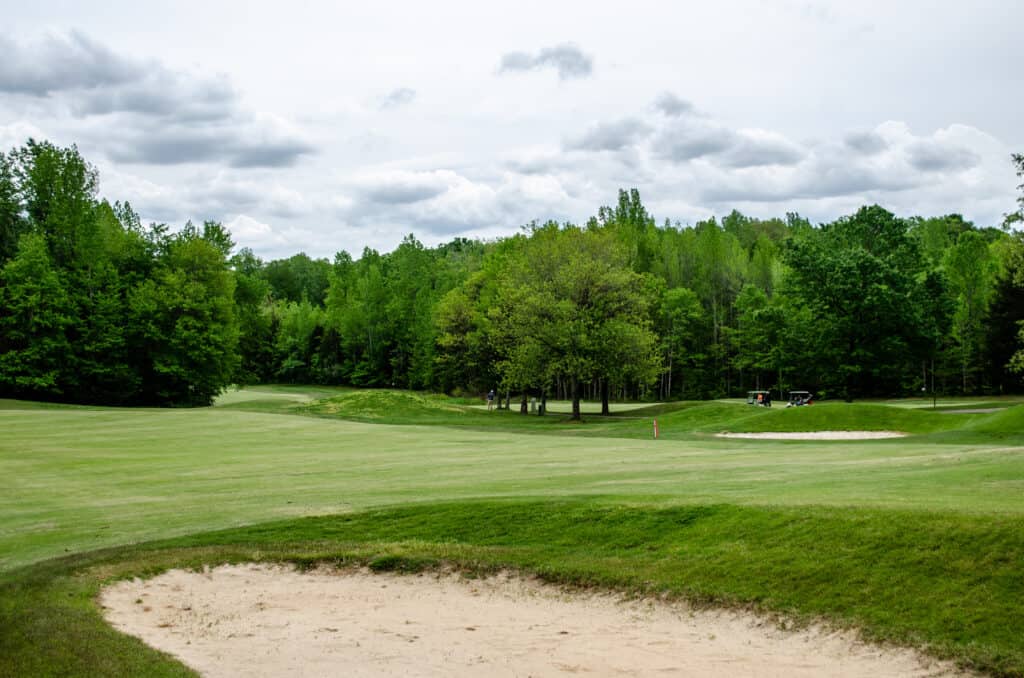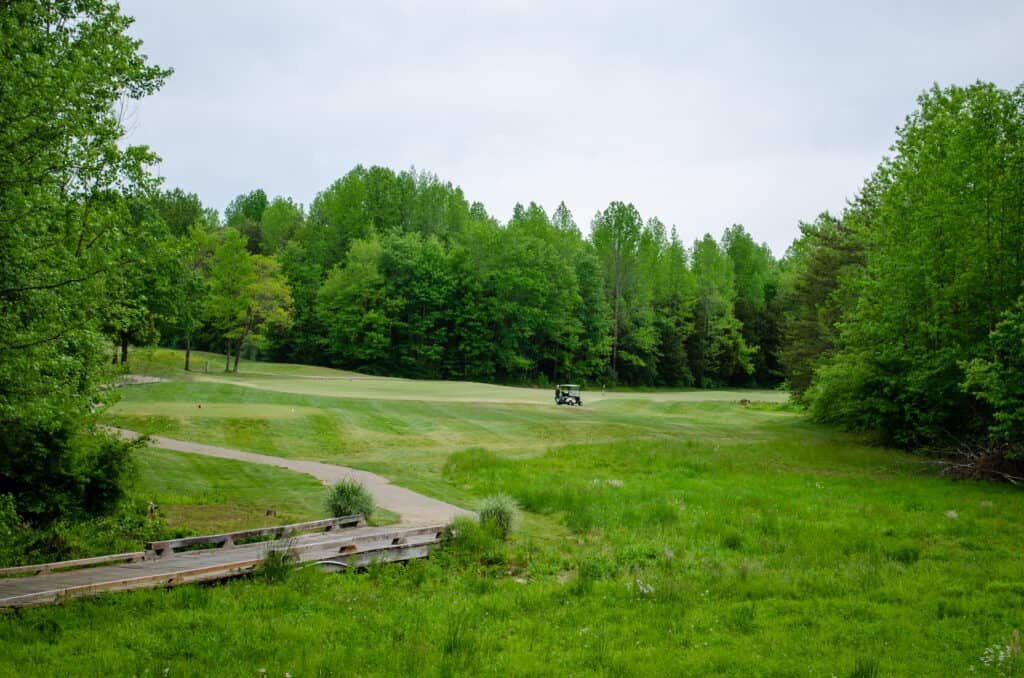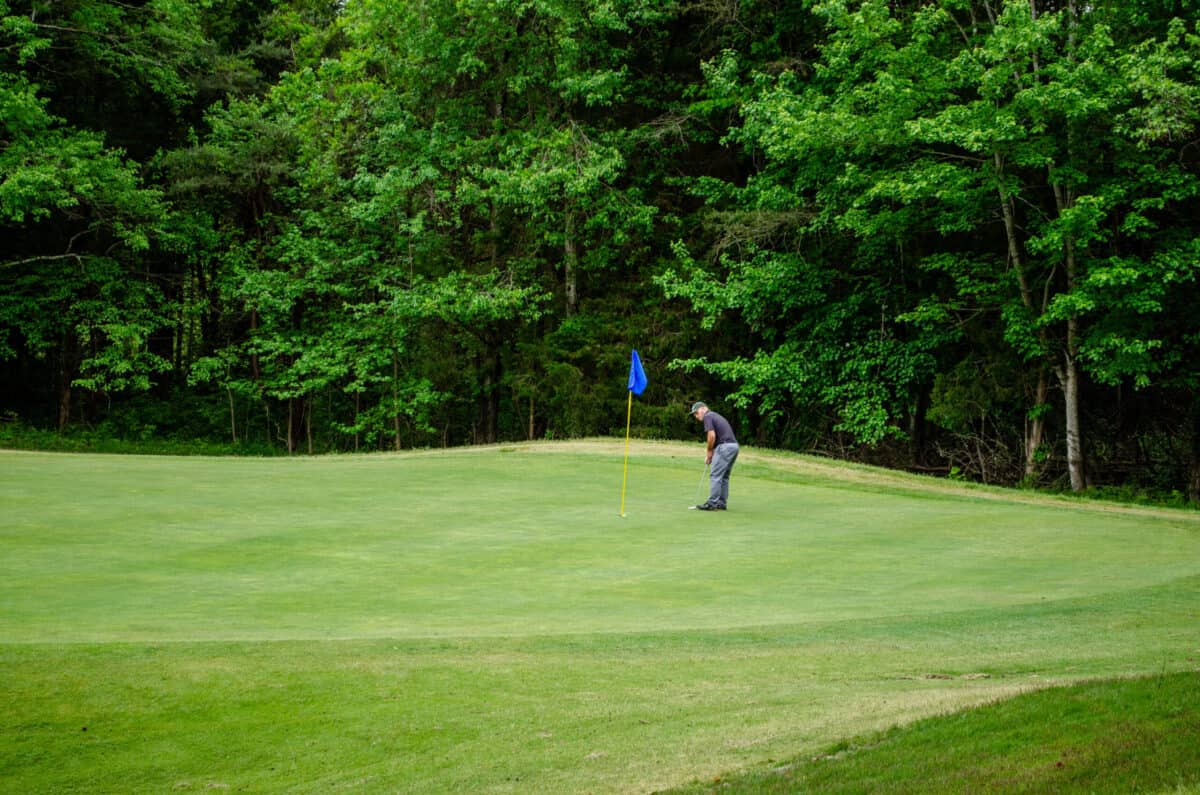With the advent of hybrid clubs, many golfers have replaced their long irons with the hybrid equivalent but may have kept the 3 wood in their bag as these clubs have different applications.
The 3 wood is a fairway wood, and along with the five, wood is designed to get distance and consistency either from the tee or from the fairway. The 3 hybrid is intended to replace the 3-iron making it easier for golfers to hit and get distance without the struggle of swinging a long iron.
Let’s examine the primary differences between these two in terms of loft, distance, shafts, and clubhead construction and get a good idea about which you should have in your bag, if not both.
The Introduction Of The Hybrid Clubs
Hybrid golf clubs date back to the ‘70s when clubs like the Ginty and the Baffler were around, and while they didn’t spark the imagination of the average golfer then, those that used them marveled at how easy they were to hit.

In 2004, only about 7% of golfers used hybrids, but by 2007, that number had jumped t0 30%! The natural appeal of the hybrids is that they are easier to hit consistently and accurately than the classic long irons.
For most golfers of the age, having to hit a 2,3 or 4 iron from the fairway was a daunting prospect, and when the option became available to use a club that gave the same kind of distance but was easier to hit, golfers of all levels jumped at it!
More golfers are discovering the joy of hitting their ball further with these longer clubs than with their long irons, and nowadays, most golfers have hybrids in the mid-irons, with 4,5,6 hybrids replacing those irons in the bag.
What is for sure is that hybrid technology is here to stay.
3 Wood Vs. 3 Hybrid – Loft
The first comparison between the two clubs in the loft. The loft is usually between 15 and 18 degrees for a 3 wood, while the 3 hybrid lofts are generally 22 or 23 degrees.
The lofts of the 3 wood golf club haven’t changed that much, and they are still a club of choice for the longer shots on approach to par 5’s or off the tee when the fairways are narrower and demand greater accuracy and less distance.
The lofts on the 3 hybrid golf club correspond to the loft on the 3-iron, but the3 hybrid design and construction make it easier for the higher handicap players. They would typically struggle to hit a 3-iron successfully.
Faced with a long shot from the fairway in the past, many golfers did not feel comfortable or confident with the 3-iron. This often led to poor shots, avoiding it entirely, and opting to hit a shorter club to sacrifice the scoring opportunity.
Having the 3 hybrid available with the same loft allows players to hit long approach or lag shots from the fairway with far greater confidence, which is why they have shot to popularity.
Fairway Wood Vs. Hybrid – Clubhead & Material Construction
The club head is one of the most significant differences between the 3 wood and 3 hybrid. The 3 wood clubhead has more volume, with the CG situated further back in the clubhead to provide more distance on the shot.
The 3 wood clubface is also larger with a larger sweet spot but offers less forgiveness on off-center hits than the 3 hybrid. The hybrid’s sole is more forgiving, and the CG in the hybrid is located more forward as this offers greater forgiveness and more control and accuracy.
As far as material goes, 3 woods use similar materials to drivers, and many have stainless steel faces, while the 3 hybrid would be more similar to iron and would have materials like iron, graphite, and steel in their build.

Remember that the 3 wood is part of the ‘woods’ group of clubs, and this includes the driver and five wood, so their fundamental makeup is more similar to that of drives than of irons.
The 3 hybrid, also known as rescue clubs, are made to replace the irons but still retains some iron characteristics, including clubface design and material. Even though these clubs are easier to hit, their basic makeup remains the same.
Fairway Woods vs Hybrids – Shaft Length And Material
When it comes to woods, shaft materials may vary, and often you find shafts similar to drivers in three woods, with materials like graphite being used to make the club lighter and provide some control over the shaft flex.
Typically, irons would come with steel shafts, but hybrids are often paired with a graphite shaft for the same reason as the woods are; plus, it offers golfers and club fitters greater flexibility with the shaft choice vs. player swing speed.
If you stand a 3 wood side by side with a 3-iron, you will see that the 3-wood is longer, and in a bag of 14, the 3-wood is usually the second-longest club behind the driver. The 3-wood shaft is usually about ½ inch longer than the three hybrids, which is similar to the lengths on the 3-iron. The longer post on the 3 wood makes it much more difficult to swing consistently and achieve good contact; even though the clubhead and sweet spot are more oversized, the shorter shaft on the 3 hybrid makes it more controllable and more likely to achieve a sweet strike.
Whereas the slightly shorter shaft length of the 3 hybrid can create more consistent contact and consistent shots for when golfers carry the hybrid. That consistency leads to more accurate shots than longer irons or a 3 wood.
One measurable difference is that 3 fairway woods have adjustable hosels, while most 3 hybrids do not offer this option, although this would become more common in the future as it makes the hybrid that much more flexible.
As a rule, the shaft weights of the 3 hybrids would be a little heavier than that of the driver or 3-wood.
Golf Ball Distance And Accuracy
The battle between these two clubs comes down to the two most important aspects of golf: accurate and precise shots and average distance. There is no question that you will hit the 3 -wood further than you would hit the 3-hybrid, and the same would be true with the 3-iron.
The design, length, and clubhead of the 3 fairway wood all contribute to a greater distance, and whether it’s off the tee instead of the driver or from the fairway, the 3-wood is the second-longest hitting club in the bag. Period.
The issue comes in with accuracy, as slightly off-center hits with the 3-wood will get your ball into trouble, which is where the hybrid steps into the spotlight. But, distance is always needed, so the eternal dichotomy between accuracy and distance continues.
The 3-wood would achieve distances greater than the 3-hybrid averaging between 210 yards to 240 yards or more depending on your skill levels, while the 3-hybrid would be getting between 180 yards and 210 yards.
Also, the 3 hybrid will generally hit higher shots with a high ball flight, bringing it down softer. The 3-wood is made for the shallower trajectory with a more forward roll and gaining more distance.
The 3 hybrid would be your go-to when looking for accuracy, but distance-wise, the 3-wood will be superior.
When Would You Use Them Playing Golf
One of the points to remember here is that you can have both clubs in your bag, and if you have a reasonably proficient swing, this would be a typical bag configuration.
The issue with the long irons was that they are challenging to swing consistently for the weekend golfer, intermediate players and the junior golfer, and replacing the 3-iron in your golf bag with the 3 hybrid, but keeping the 3-wood makes perfect sense.
The mental or confidence issue with the 3-iron vs. the 3 hybrid is very much in play as many golfers feel more comfortable and confident with the three hybrids than the 3-iron in their hands.
Off the longer par 3’s, the 3 hybrid is an excellent option as the control and accuracy would be very useful while playing a longer second shot on Par 5’s would be 3-wood country.
However, if you are playing a layup game rather than a distance game, using the 3 hybrid from the fairway to land the ball in a strategic spot that gives you a better and more accessible approach is a viable option too.
One of the drawbacks of a 3-wood is that they don’t play well from the rough or even the second cut, as the broad head design is made to cut through the air and not to deal with resistance from the grass.
Here, the 3 hybrid would play better as their iron-like characteristics would make it a better option to get a clean strike and get a reasonable distance from rough or second cut lies. Making it a more versatile club head that cuts through that long grass.
A poor strike with the 3 wood from the rough would undoubtedly result in more trouble or losing shots, while the 3 hybrid options would probably have a better outcome.
The 3 hybrid would be the preferred option, where you need to reduce the risk of dropped shots or play yourself into a better position from a less-than-ideal lie and still achieve some distance.
A ball lying clean on the fairway or just off it would offer an ideal 3-wood option if you still need greater distance with higher ball speed and have a wider target area to aim at, so if the shot was slightly off, your ball would still be in play.
Many players may struggle to hit the 3 hybrid off the tee where a more accurate shot is needed, and the driver would not be an option, but in that case, your 3 wood is ideally suited.
If you can confidently swing the 3 hybrid from the tee and achieve reasonable distance and placement on that hole, it can be used.
3 Wood Vs 3 Hybrid – Why Not Have Both
The 3 hybrid replaces the 3-iron, so there is no need to have one or the other as each is designed for a different purpose on the golf course. The set of fairway woods has applications just as much as the 3 hybrid would have.
Yes, the 3 hybrid is more manageable to swing than the three iron it replaces and the 3 wood, but the 3 wood has a place in the bag unless you have moved to accept a shorter game and opt for greater and more consistent accuracy.
Remember, though, that if you want to improve your golf, you need a combination of accuracy and distance, and while replacing your three iron with a 3 hybrid makes sense, it also makes sense to have a solid fairway wood for those longer approaches and tighter tee shots, but still have reasonable distance.
Being competent with a 3 wood may take some discipline. You may have to do some technical tweaks like making sure the shaft is matched to your swing speed and looking at the loft setting options and possibly changing the lie angles, but in the end, having both in your bag covers the distance gaps in your game.
Even The Pros Use Hybrids
More than a third of the pros on tour have hybrids, and many have a 3-hybrid as they are simply easier to hit and control than three irons. They can maneuver the ball more accurately and achieve good distance using these clubs with their skill and control.
As with amateurs, the pros carry both 3 wood and 3 hybrids as the hybrid replaces the 3 -iron in the bag. The hybrid offers more spin and higher flight than the 3 -iron, and for the pros, swing confidence and consistency are the keys to good results on tour.
Golf club manufacturers recognized this and have developed many high end hybrids that pros use. In fact, most golf club manufacturers have a high end option in the hybrid family.
Conclusion
There is a marked difference between the 3 wood and 3 hybrid. Still, it should be remembered that the 3 hybrid is not intended to replace the 3 wood but rather to complement it by adding a more user-friendly club to be used on the shots where a 3-iron would generally be taken.
Test out some three hybrids at your local pro-shop and see which one feels better, and then compare that to your three iron in terms of consistency on distance and accuracy, and you will certainly find one that works for you and your game.
- Should Tee Boxes Be Level? - January 23, 2024
- 3 Hybrid Distance - November 15, 2023
- Innovations in Golf Mobility: An In-depth Review of Top Golf Scooters - October 12, 2023
